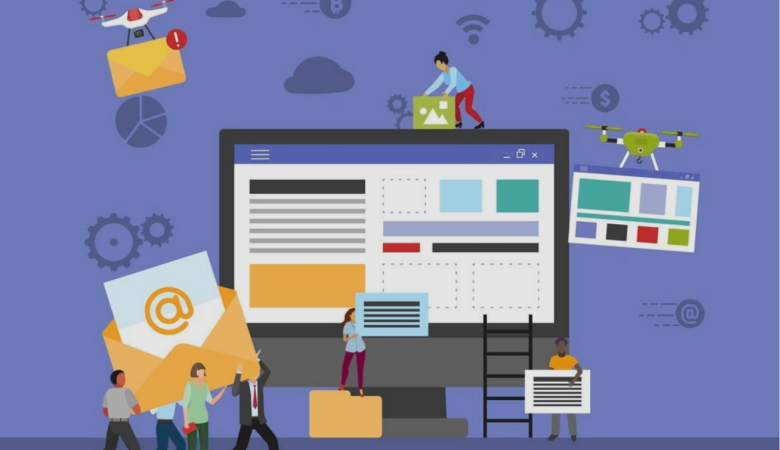Want to skip straight to the ebook? We get it. Grab your free ebook, The Freelance Web Designer’s Guide.
Freelancing.
Once used to describe a jobless creative, the term has now become a badge of honor to many — and it’s looking to gain even more currency in the next few years.
With the rapid rise in technology and mobility over the past decade, the idea of working remote (outside of the traditional office) has been top of mind for many. What’s even more interesting is that many aren’t only leaving the office, but the 9–5 grind all together.
Believe it or not, freelancers now make up almost 40% of the workforce. Take that in for a sec.
Forty. Percent.
Why are there so many freelancers?
Well, aside from the boom in technologies that facilitate a more mobile but still connected life, I think many have been drawn to the idea of working whenever, from wherever, for whoever.
Once you’ve tasted that life, it can be hard to go back.

That being said, it isn’t all roses. We may have abandoned the 9–5 life, but the hours aren’t much better when you’re running your own brand and business. In fact, you give up the 9–5 for “working damn-near all the time.”
And you may have left your boss behind at your fancy corporate job — but now you have a lot of bosses. Each new client becomes your new boss (though hopefully, a really nice one), and you need to take care of them so you can continue to attract and retain new bosses down the road.
That being said, at the end of the day you (and you alone) are in full control of the projects you work on—and when you work on them. Which is something you simply cannot get in your typical office job.
Companies are also driving the change
Instead of hiring a full-time designer who requires a full-time salary, benefits, and workspace, a company can bring in a contract designer.

The contract designer won’t need a desk. They won’t need benefits. And typically, their pay correlates directly to the work they’ve already done (not what they’re going to do).
For many businesses, this has become a very attractive alternative to the full-time employee and will continue to become more popular in the coming years.
Why freelancing may be for you
Freelancing can be one of the most liberating experiences of your professional life. Taking the leap to working for yourself and being solely responsible for the money you earn is very rewarding. Knowing that, in many ways, the amount of work you put in directly affects how much you earn is empowering in ways few full-time jobs can match.
The most popular side-effect of the freelancer lifestyle is the ability to travel. Without being locked down to any particular office or location, you’re free to let your wanderlust take you wherever you please. As long as you have internet, you can work.

The work also caters to the creative who craves new things on a regular basis. (And don’t we all?) Some projects may last months, but you can freely choose which projects you take on and how long they’ll last. Having the ability to try new things on a frequent basis leads to more experience, education, and relationships you can’t get anywhere else.
Is freelancing for everyone?
I’ve spoken to hundreds of freelancers, but even more people who are looking to become freelancers.
“How do I get started?” is one of the most common questions I hear.

And it is a leap.
It’s very different from your typical 9–5 job. You go from being told what to do to having full control of your to-do list. On the surface, this sounds amazing, but keep in mind that many things that your company used to handle for you are now on your plate, including:
Taxes
Taxes are much easier when others take them out for you. It’s much more difficult to put it aside yourself, let alone calculate how much needs to go to Uncle Sam. It’s also important to note that taxes themselves are different for freelancers, where in many cases you need to pay quarterly and fold in self-employment taxes.
Paying yourself
Life’s much easier when you get paid every two weeks like clockwork. For freelancers, getting paid becomes much less predictable, and cash flow can get tight. Keep afloat involves a balance of scheduling and client communication, but does seem to stabilize over time.
Managing your own time
With a full-time job, we’re usually handed a standard working day of 9 a.m. to 5 p.m. As a freelancer, there’s no quitting time, unless you create one for yourself (which is easier said than done). Managing your schedule becomes one of the more difficult things you’ll encounter in your freelancing career.
But we want to help you take the plunge
We get it: being a freelancer isn’t easy. But we also know how incredibly liberating it can be.
So we put together this free ebook, The Freelance Web Designer’s Guide, and filled it with tips, tricks, stories, and more to not only help you get started, but also help the seasoned freelancer become more successful.






Leave a Reply